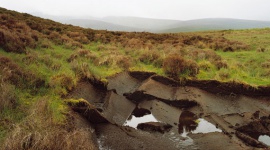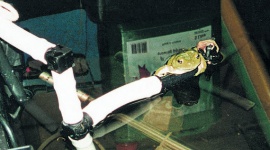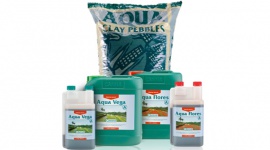Inert substrates
Besides rockwool there are many other inert substrates. In this section we will discuss some of these, but considering the popularity and suitability of rockwool we will discuss cultivating on rockwool in more detail.
The origins of growing on substrates
Even though the first farmers quickly discovered that plants grew better on the remains of other plants and dung, it was thousands of years before people understood exactly why. Research into plant food began many moons ago, long before our time, but only recently, about 150 years ago researchers found out exactly which substances in the dung actually feed the plants. And as a result of these discoveries, the artificial fertiliser industry was born.
Shortly before the dawn of this era, in the Netherlands Napoleon introduced monoculture, where one crop per field is cultivated. The combination of these new systems increased farming production to new levels. Initially the new developments produced tremendous results, but this success was quickly reversed. No one was familiar with these cultivation methods and they were certainly unaware of the drawbacks. The damage in the cultivation of vegetables was particularly noticeable. Year after year an excess of artificial fertilizers was applied creating problems in the potting mix structure and in the fertility of the ground.
The same crops were grown year in year out in monoculture on the land. In turn the monocultures brought on a multitude of plagues. Potting mixes bound plagues were particularly difficult to counteract. A good solution was required urgently. Growers began placing the crops in separate compartments and cultivating them on growing medium instead of in the open ground, and this was the beginning of growing on substrates.
Growing on substrates was put into practice for the first time in the first half of the 20th century. As plastic containers became available growing on substrates made considerable progress. Production could be scaled up and automated. In practice it turned out that growing on substrates generated up to 25 percent greater yields compared to cultivating in the open ground. This is because the nu- trients can be adjusted directly to the circumstances at any particular time.
When CANNA HYDRO was introduced in the 1980s serious small scale cultivation became possible on inert media and rockwool in particular. This CANNA HYDRO formula has been used successfully worldwide for many years and even though many have attempted to copy the formula, no slabch has yet been developed.
Clay Pebbles
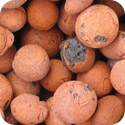 Clay Pebbles are made by forming clay into pellets and then firing these in a hot kiln. This causes the clay to expand and become porous. Clay Pebbles are available in various shapes and sizes and with two types of surface; smooth and coarse. Clay Pebbles have been used in horticulture since 1936. They have the advantage that, as long as they are well cleaned, they can be reused for up to five years. The greatest disadvantage of Clay Pebbles is that they can absorb almost no moisture, making them unsuitable as a run-to-waste substrate.
Clay Pebbles are made by forming clay into pellets and then firing these in a hot kiln. This causes the clay to expand and become porous. Clay Pebbles are available in various shapes and sizes and with two types of surface; smooth and coarse. Clay Pebbles have been used in horticulture since 1936. They have the advantage that, as long as they are well cleaned, they can be reused for up to five years. The greatest disadvantage of Clay Pebbles is that they can absorb almost no moisture, making them unsuitable as a run-to-waste substrate.
However, they are widely used in recirculation systems where the nutrients continually pass by the roots. This is because Clay Pebbles have good supportive properties and are heavier than water and therefore do not float. In addition Clay Pebbles are used extensively as in potting mixes and as a drainage layer at the bottom of pots when growing in coir or in potting mixes.
Perlite
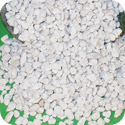 Perlite is a glassy, volcanic rock that is ground and then baked at high temperature. Perlite is also inert, but due to its poor supportive properties it is relatively vulnerable as a growing medium itself.
Perlite is a glassy, volcanic rock that is ground and then baked at high temperature. Perlite is also inert, but due to its poor supportive properties it is relatively vulnerable as a growing medium itself.
However, it can be used as a potting mix improver and particularly to increase the air ratio in the potting mix; though, these days there are environmentally friendlier methods for this, such as adding white peat.
Mapito
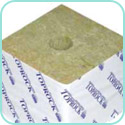 Mapito is a very light medium with limited water retention capacity. This means that the substrate will dry out faster and so it needs to be watered more frequently. Mapito is a mixture of Polyurethane (PU), rockwool and sometimes coco or even perlite.
Mapito is a very light medium with limited water retention capacity. This means that the substrate will dry out faster and so it needs to be watered more frequently. Mapito is a mixture of Polyurethane (PU), rockwool and sometimes coco or even perlite.
Most types of Mapito are not “clean”, in that they often have a higher EC and a lower pH than the ideal growing medium; this is the great disadvantage of Mapito. So it is always essential to determine the exact pH and EC values of the Mapito and to rinse it thoroughly before use!



